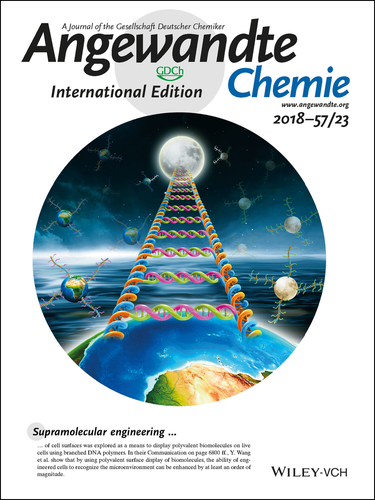Inside Cover: Polyvalent Display of Biomolecules on Live Cells (Angew. Chem. Int. Ed. 23/2018)
Graphical Abstract
Supramolecular engineering of cell surfaces was explored as a means to display polyvalent biomolecules on live cells using branched DNA polymers. In their Communication on page 6800 ff., Y. Wang et al. show that by using polyvalent surface display of biomolecules, the ability of engineered cells to recognize the microenvironment can be enhanced by at least an order of magnitude.





